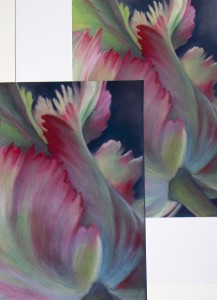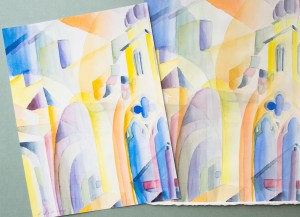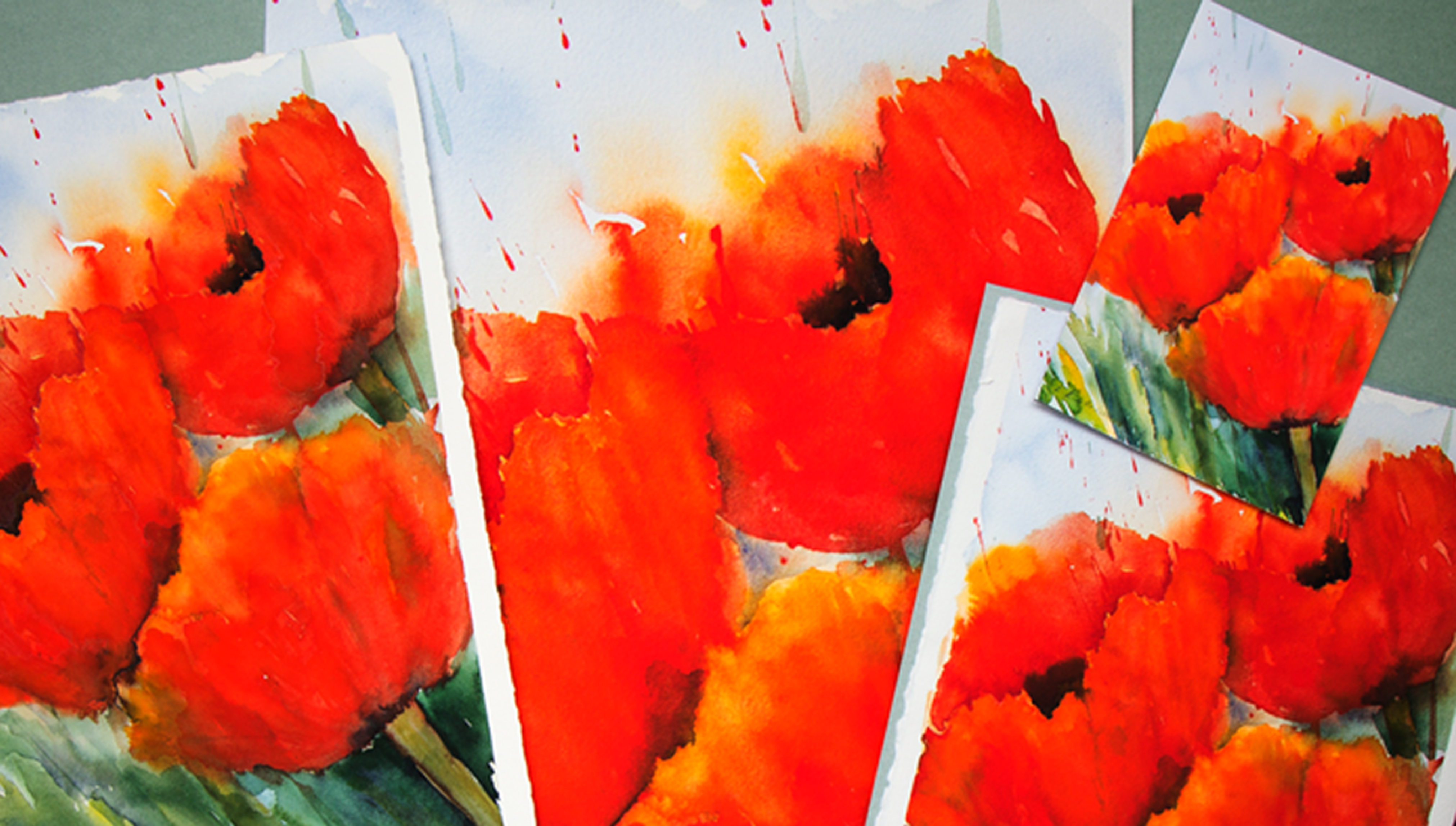Karin Kuthe reports in the following article about her experiences with digital reproductions of her traditionally painted pictures. The highly experienced artist works in the techniques of watercolour, acrylic and pastel on traditional artist papers from Hahnemühle. For a few years she has reproduced her originals on Hahnemühle Digital FineArt papers as inkjet prints. She is excited by the creative potential of image reproduction on the same paper on which her originals arise. Enjoy reading!
When I wrote my first book in 2002 about watercolour painting, I learned to appreciate the advantages of digital photography. Until then I have my work (watercolour, acrylic, pastel paintings) photographed analog to preserve them for me. I then had the photographs scanned and made into reproductions with a normal dye ink printer. This was very expensive and often not satisfying in terms of colour reproduction and light fastness of the replicas.
 I had then been introduced to the Hahnemühle Digital FineArt papers and heard about fine art printers who work with long-term stable pigmented inks. The results that I achieved now on fine art printers with artist papers that are provided with a so-called ink-receiving layer convinced me immediately. Today I work with an A2 Fine Art printer that prints with nine pigment inks. On Hahnemühle’s website there are tips for printer settings and print profiles for each paper to download. So I taught myself how to print. It was a challenging but fascinating.
I had then been introduced to the Hahnemühle Digital FineArt papers and heard about fine art printers who work with long-term stable pigmented inks. The results that I achieved now on fine art printers with artist papers that are provided with a so-called ink-receiving layer convinced me immediately. Today I work with an A2 Fine Art printer that prints with nine pigment inks. On Hahnemühle’s website there are tips for printer settings and print profiles for each paper to download. So I taught myself how to print. It was a challenging but fascinating.
For reproductions of my body of work I use Hahnemühle Digital FineArt papers only. These reproductions are very resistant to light so the image permanence is very high (according to Hahnemühle from 80 to 200 years).
The reproductions are so close to the originals that they can hardly be recognised as a printed artwork. Even the smallest structures and elevations or embossments in the original appear three-dimensional in the reproduction at first glance.
The Hahnemühle Digital FineArt Collection includes traditionally crafted, genuine artists’ papers with outstanding surface structures and haptics of centuries past papers. With the wide range of more than 20 media types I can choose the papers according to the technique and paper used for my original. For the reproduction of watercolours I use “William Turner”, “Albrecht Dürer” or “Torchon”. My favourite papers for the reproduction of pastels are “William Turner” or “Albrecht Dürer” and for acrylic and oil paintings I use the inkjet canvas “Canvas FineArt”. “William Turner”, “Albrecht Dürer” and “Torchon” have a slightly textured painterly surface and “FineArt Canvas” a linen texture. It´s a high-quality canvas with ink receiving layer for inkjet printers. When reproducing sketches or drawings that were created on a smooth paper I opt for the digital “Bamboo” paper which is very suitable.
To create a digital image file I shoot my original artwork with a DSLR outdoors in overcast conditions (without flash). With slightly subsequent editing in a photo editing program on the PC I can achieve the best possible reproduction of the original.
With the help of modern techniques (good camera, pigment ink printers) and special papers, I create high-quality fine art prints of collectable works of art. Since the reproductions are deceptively similar to the originals, buyers often decide for the more affordable art print.
Also the possibilities of reproductions inspired me to combine both techniques in one work of art. I am creating a kind of “mixed media edition” as I once again editing or re-work the digital prints with acrylic paint, pastel or coloured pencils. I create painted substrates to be reproduced as a digital file in order to paint on in different ways afterwards. I edit it and give it another artistically, personal touch and create “digital originals” as limited edition.
In short, I´m thrilled by the digital reproductions of traditionally generated works of art on Hahnemühle inkjet papers because they are for example:
– deceptively similar to the original
– lightfast and highly conversational valued
– printable in different formats,
– can be edited creatively
– attract a greater audience like collectors and art lovers
Now that I have raved so much upon the digital reproduction of traditionally created works of art, I´d love my readers to motivate doing their own digital reproductions or utilising a print studio for doing outstanding art reproductions. In my own numerous painting workshops I pass on my knowledge even about digital reproductions.
I wish you much joy and success!
Sincerely,
Karin Kuthe
Karin Kuthes portfolio: http://www.karinkuthe-malen.de/








